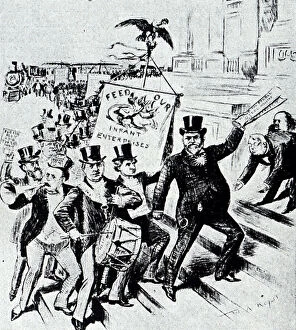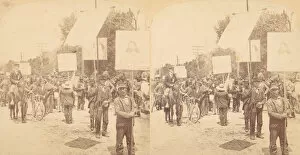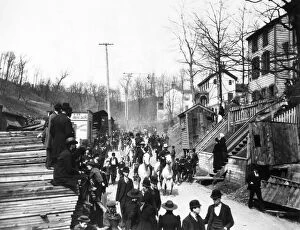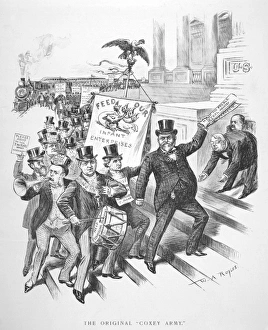Coxeys Army Collection
Coxey's Army was a group of unemployed workers who marched on Washington D.C. In 1894 to demand jobs and relief during the midst of the Panic of 1893
All Professionally Made to Order for Quick Shipping
Coxey's Army was a group of unemployed workers who marched on Washington D.C. In 1894 to demand jobs and relief during the midst of the Panic of 1893. Led by Jacob Coxey, they believed that the government should provide work for those in need. The march began with just over 100 men but grew to thousands as it made its way from Ohio to the nation's capital. Despite their peaceful intentions, they were met with resistance from authorities and many were arrested along the way. Although Coxey's Army did not achieve its immediate goals, their actions brought attention to the plight of the unemployed and helped pave the way for future labor movements and social reforms. Today, Coxey's Army serves as a reminder of the struggles faced by working-class Americans during times of economic hardship and stands as a symbol of grassroots activism and solidarity in fighting for social justice. Their legacy lives on in our ongoing efforts to create a more equitable society for all.










